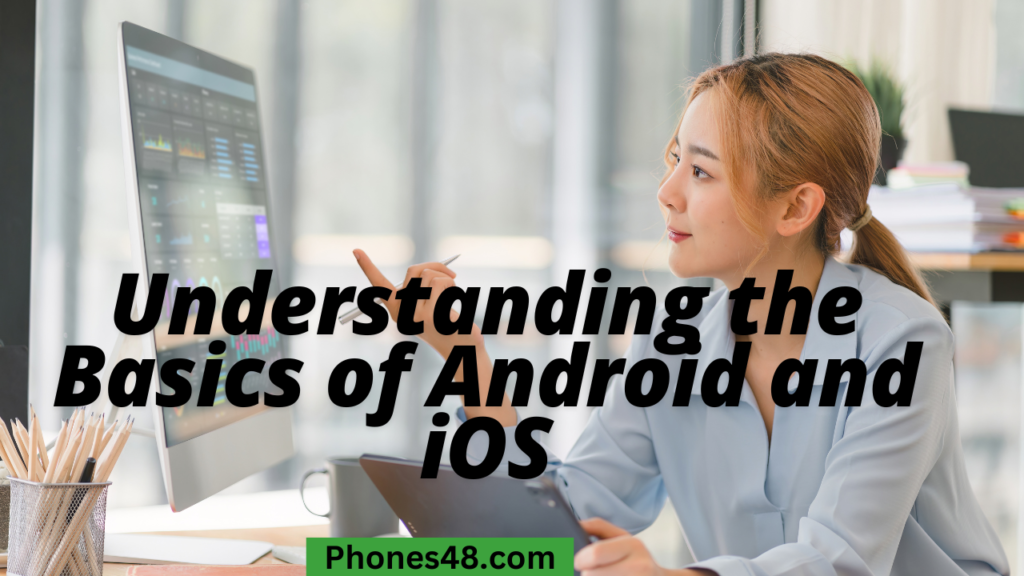Introduction of Android vs. iOS: Which Operating System is Right for You?
When it comes to choosing a mobile operating system, the decision often boils down to Android versus iOS. These two titans dominate the market, each offering distinct advantages and unique drawbacks. Your choice impacts how you interact with your phone, apps, and the digital world, making it a critical decision. Whether you’re someone who values flexibility or who prefers seamless integration, understanding the nuances of these platforms can help you decide. In this guide, we’ll explore every facet of Android and iOS, from customization to hardware options, app ecosystems, and beyond. By the end, you’ll have a clear picture of which operating system aligns with your lifestyle and needs.
Understanding the Basics of Android and iOS

What is Android?
Android, developed by Google, is an open-source operating system that powers millions of devices globally. Its open-source nature means manufacturers like Samsung, Xiaomi, and OnePlus can use and modify it for their devices. This results in an incredibly diverse range of smartphones that cater to every budget and preference. From entry-level phones to cutting-edge foldable devices, Android offers unparalleled variety. Its user-friendly design, coupled with deep customization options, has made it a favorite for tech enthusiasts. However, the diversity also means that Android’s experience can vary significantly depending on the manufacturer.
What is iOS?
On the other hand, iOS is Apple’s proprietary operating system, exclusive to its lineup of devices like the iPhone, iPad, and iPod Touch. Known for its streamlined user experience, iOS emphasizes simplicity and security. Unlike Android, iOS has a closed ecosystem, meaning Apple controls both the hardware and software. This tight integration ensures consistent performance and reliability across all devices. While this approach limits customization options, it guarantees a uniform experience that appeals to those who value predictability and stability. Over the years, Apple’s commitment to design and innovation has cemented iOS’s position as a premium choice.
Customization and User Interface

Android’s Customization Features
One of Android’s standout features is its ability to be customized down to the smallest detail. Want to change the look of your home screen? Install a custom launcher. Prefer a different font or theme? It’s just a few taps away. Widgets, shortcuts, and apps can be arranged to create a truly personalized experience. Android also allows users to explore alternate app stores, offering a degree of freedom unmatched by iOS. Additionally, its open-file management system makes it easy to transfer files between devices, a feature power users often appreciate. However, with this flexibility comes the potential for a less cohesive experience, especially when different manufacturers introduce their unique skins and bloatware.
iOS’s User Experience
iOS takes a minimalist approach, prioritizing simplicity and uniformity over flexibility. The home screen layout is consistent across all devices, which some users find limiting but others view as intuitive. The absence of app clutter and a dedicated App Library ensures your interface remains clean. Unlike Android, iOS doesn’t support widgets in the same dynamic way, but its implementation focuses on function over form. For users who prefer a straightforward experience, iOS eliminates the learning curve and delivers an interface that “just works.” However, its restrictive nature can be frustrating for those accustomed to greater control over their device.
SeeThis Also
What to Do If Your Phone Gets Wet Step-by-Step Recovery Guide
How to Troubleshoot Common Mobile Phone Issues
Gaming on a Budget Affordable Smartphones for Gamers
Mobile Display Technologies: AMOLED, LCD, and OLED Explained
App Ecosystem
Google Play Store vs. Apple App Store
Both platforms boast millions of apps, but the approach to curation and regulation varies significantly. Android’s Google Play Store offers a broader selection, including experimental apps that wouldn’t meet Apple’s stringent guidelines. This open approach allows developers more freedom, which can sometimes lead to security risks. Meanwhile, Apple’s App Store is known for its rigorous review process, ensuring that all apps meet high standards of quality and security. While this limits the variety, it results in a polished experience. For users who prioritize quality over quantity, the App Store is often a better choice.
Availability of Free Apps
When it comes to free apps, Android holds a noticeable edge. Many apps on the Google Play Store come with free tiers or ad-supported models, making them accessible to a wider audience. Apple’s ecosystem leans toward premium offerings, where free versions often come with limited features or are entirely absent. While this aligns with Apple’s focus on premium content, it can be a barrier for users unwilling to pay for apps.
Hardware Options

Wide Variety with Android
Android’s greatest strength lies in its hardware diversity. Whether you’re looking for a budget-friendly device, a mid-range phone with solid features, or a flagship with cutting-edge technology, Android has you covered. Manufacturers like Samsung, Google, and Huawei push the boundaries with features like foldable screens, massive batteries, and advanced cameras. This variety ensures that there’s an Android phone for everyone, but it also means that not all devices offer the same level of quality or support.
Apple’s Premium Hardware
Apple, on the other hand, focuses on a limited lineup of premium devices. Every iPhone, from the base model to the Pro series, is designed with meticulous attention to detail. Materials like stainless steel, ceramic, and high-quality glass give iPhones a luxurious feel. While the price tag reflects this premium approach, users are guaranteed a consistent experience across all models. Apple’s focus on fewer devices also ensures better long-term support and optimization.
Performance and Stability
How Android Handles Multitasking
Android excels at multitasking, offering features like split-screen mode and picture-in-picture functionality. Devices with higher RAM and powerful processors handle multiple apps with ease, making Android ideal for heavy users. However, performance can vary depending on the device and manufacturer’s software optimization. Some Android phones may experience lag or instability over time, particularly if updates are delayed.
iOS’s Efficiency
iOS is designed specifically for Apple hardware, resulting in unparalleled efficiency. Even devices with less RAM often outperform their Android counterparts due to superior optimization. The absence of fragmentation ensures a stable and smooth user experience. This consistency, combined with timely updates, keeps iPhones performing well even after years of use.
Security and Privacy

Android’s Approach to Security
While Android offers robust security features like biometric authentication and app permissions, its open nature makes it more vulnerable to threats. The fragmented update system means not all devices receive timely security patches, leaving some users exposed. Google has taken steps to address this, but the responsibility often falls on manufacturers to deliver updates promptly.
Apple’s Commitment to Privacy
Apple’s privacy-first approach sets it apart. Features like App Tracking Transparency give users control over how their data is used. Apple’s closed ecosystem and strict app policies further enhance security, making iOS a preferred choice for privacy-conscious users.
Conclusion
Choosing between Android and iOS ultimately depends on your preferences, priorities, and budget. Android’s customization, affordability, and diversity appeal to a broad audience, while iOS’s simplicity, security, and seamless ecosystem cater to users seeking a polished experience. Whichever you choose, both platforms have their strengths and can cater to various needs. Evaluate what matters most to you, and you’re sure to make the right choice.
FAQs
- What makes Android more customizable than iOS?
Android offers features like custom launchers, widgets, and third-party app stores, allowing users to personalize their devices extensively. - Why are iOS updates faster compared to Android?
Apple controls both hardware and software, enabling simultaneous updates across all supported devices, unlike Android’s manufacturer-dependent system. - Are apps on Android more prone to malware?
While Android apps have a higher risk due to the open Play Store, Google’s Play Protect and user vigilance can mitigate threats. - Which OS is better for gaming: Android or iOS?
iOS devices often offer better gaming optimization and exclusive titles, but Android’s hardware diversity caters to various gaming needs. - Is iOS worth the premium price?
If you value seamless integration, security, and long-term support, iOS justifies its premium cost. However, Android offers excellent value for budget-conscious users.






Pingback: What Makes 5G Phones Faster? An In-Depth Look at 5G Technology - phones48.com
Pingback: Exploring the Future of Mobile Phones: AI, Foldables, and Beyond - phones48.com